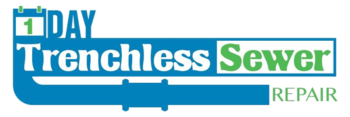The municipal plumbing and water lines throughout our cities in Ohio are aging and in some areas already deteriorating. We’re putting in more sewer and water lines through new construction then what we maintain of already existing lines. This has caused a situation where sewer and water lines are beginning to fail at alarming rates. From tree roots infiltrating the systems, to the shifting earth as it freezes and thaws to pipe corrosion and eventual collapse. There are a wide variety of problems facing the plumbing systems in Ohio today.
#1. Municipal Sewer and Water Line Repairs
As home and business owners we all know it’s our responsibility to maintain the sewer and water lines from our home or building to the municipal line. If it breaks or needs repair it’s our responsibility, not the city or township. But what do you do if the municipal line is the problem? Well, it’s happening all across America, not just in Ohio. The aging infrastructure that in some cases was put underground over 75 years ago was never intended to last forever and now is beginning to show it’s age.
Municipalities, especially those in smaller towns do not have the funding required to purchased the equipment necessary to complete trenchless pipe repairs. 1 Day Trenchless Sewer Repairs aims to bridge that gap by helping municipalities rehabilitate their existing piping systems. We have the equipment to complete any size of municipal trenchless sewer or water line repair.
C.I.P.P. (Cured in Place Pipe) is generally accepted as the best method of repair for failing municipal sewer or water lines. Liners can be installed from 2″ in diameter all the way up to 24″ in diameter or larger and are available in virtually any length. A variety of liners and resin materials for curing the pipe in place are available depending on what type of liquids the pipe will have flowing through it.
#2. Corroded or Collapsed Sewer and Water Lines
Sewer lines many years ago were made with materials like lead, cast iron, clay and orangeburg. Lead pipes were soft so naturally could be prone to collapse, cast iron pipes are very solid but after many years underground in corrosive conditions the iron will break down, form rust and weaken the integrity of the pipe. Clay and orangeburg are known to collapse during heavy freeze and thaw cycles where the ground is moving and the pipe is not designed for that so it cracks, breaks and collapses under the stress.
Collapse of a sewer line used to be an incredibly expensive problem to fix and would require extensive excavation of a property to find and fix the collapse. Today, with CCTV (closed circuit TV cameras) we can quickly get an inside, up close view of the collapsed areas of your sewer line.
Pipe Bursting or Slip Lining are both generally accepted methods of repairing collapsed or corroded sewer and water lines. The slip lining method would be preferable when working with cast iron pipeing that is still in relatively good condition. You can imagine how hard it would be to actually “burst” the cast iron pipe with a bursting head unless it was severely corroded. However when working with aging pipes made from clay, orangeburg or even plastic it’s much more cost effective to use the pipe bursting method of pipe repair.
With the Pipe Bursting method of repair we will actually be breaking up the old material of the existing pipe to make room for the brand new pipe we’ll be pulling behind the bursting head.
#3. Corrosion in Vertical Water Lines Inside Buildings
Commercial, industrial and institutional buildings literally have miles and miles of water lines running through their buildings. With some of the buildings in Ohio being built well over 30 or 40 years ago it’s caused a situation where water lines have begun to corrode and fail in record numbers. When you have a water line rupture or leak inside of a commercial building the results can be devastatingly expensive for the person who’s paying the bills.
Slip Lining or CIPP (cured in place pipe) are both suitable methods of repair when dealing with heavily corroded vertical or horizontal water lines. Slip Lining would be the preferred method of repair followed by CIPP if the host pipe (existing pipe) was not suitable to be slip lined.


